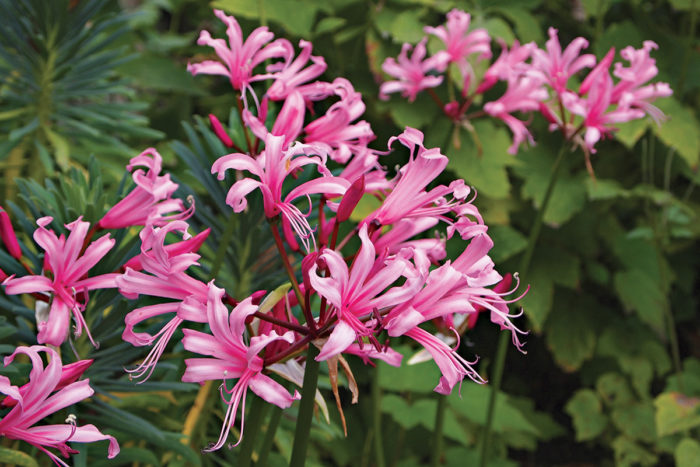
1. Rusty Foxglove
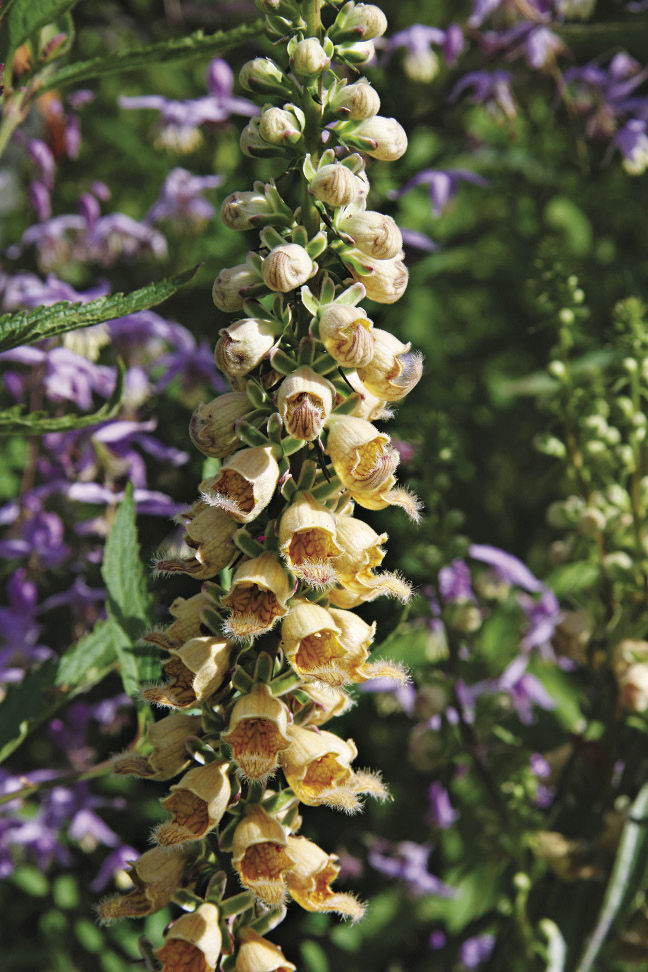
Name: Digitalis ferruginea
USDA Hardiness Zones: 4 to 8
Size: Up to 4 feet tall (in flower) and 1 foot wide
Conditions: Full sun; well-drained soil
The contrast of vertical lines helps the soft, rounded forms of grasses stand out in a garden. Rusty foxglove’s tall, flowering spires offer this upright contrast along with a beautiful, interesting flower. In early to midsummer, this perennial’s thin stems send up spikes of small blooms that are an interesting mix of a pale yellow exterior blushed with apricot pink and a rich interior of golden yellow and pumpkin orange with rusty brown veins. Once the flowers are finished, the seed heads turn a dark brown, offering textural and color differences, diverging from the tan seed heads of most grasses. This is a short-lived perennial, but it will gently reseed in open spaces, giving you plenty of young, vigorous plants that can be moved throughout your garden.
2. Naked Ladies
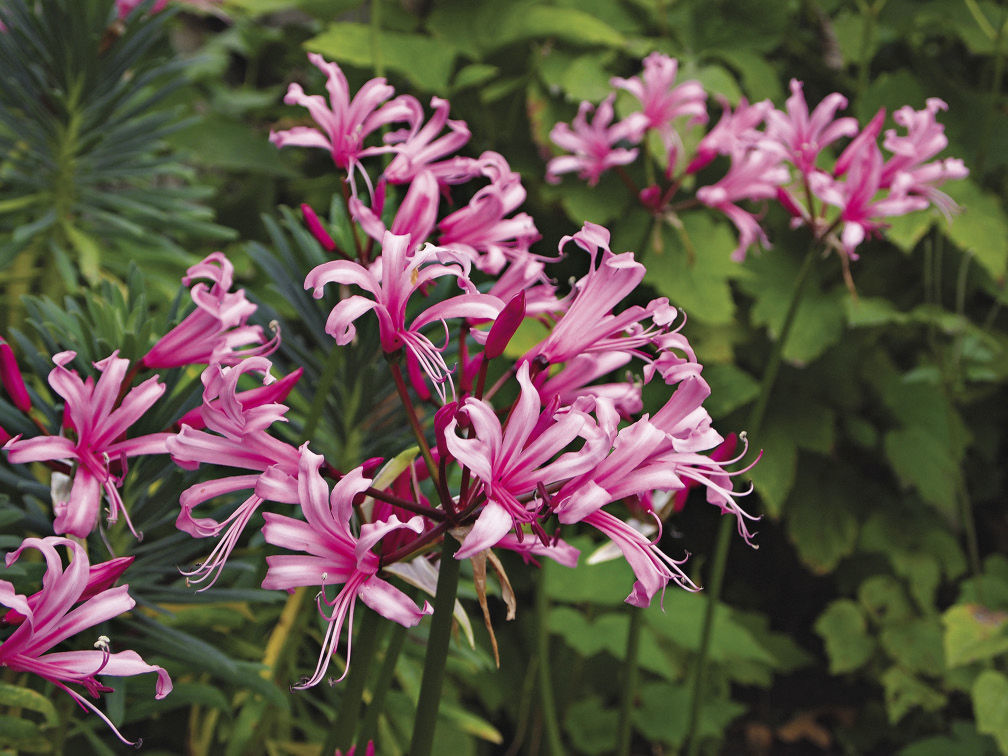
Name: Nerine bowdenii
Zones: 7 to 10
Size: 2 to 3 feet tall and 1 foot wide
Conditions: Full sun; lean, well-drained soil
Nerine, often referred to by its more risqué common name, naked ladies, is a long-lived bulb of South Africa that produces surprisingly bright pink flowers in autumn. The bulbs remain dormant all summer then spring to life in early to midfall, when thin buds that resemble amaryllis sprout up and burst into whimsical spidery blooms. Plant them near the base of smaller grasses where the colorful flowers peek through the fine, grassy foliage. Soon after the grass is cut down for winter, the bright green, strappy leaves of naked ladies emerge and remain until late spring to early summer. Once the grass begins to grow, the fading Nerine leaves are hidden from view, holding their floral surprise until the next autumn.
3. ‘Ogon’ Spirea
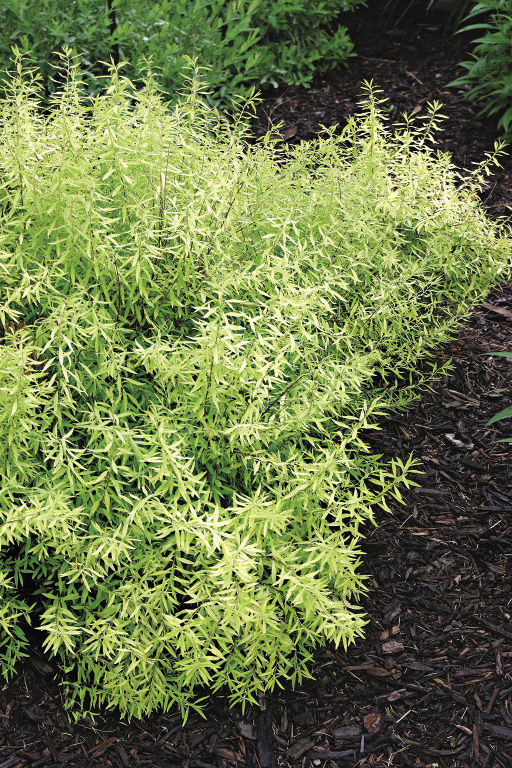
Name: Spiraea thunbergii ‘Ogon’
Zones: 4 to 8
Size: 4 to 5 feet tall and wide
Conditions: Full sun to partial shade; tolerates a wide range of soils except wet locations
The loose, wild, wispy growth of ‘Ogon’ spirea adds a touch of airiness that complements the movement of swaying grasses in the landscape. This tough, delightful shrub blooms in early spring with tiny white flowers strung along the willowy stems like gleaming little pearls. They are soon surpassed by brilliant, lemon yellow leaves that glow all season long. The golden foliage is unexpectedly resistant to burning in full sun if given water during droughty weather, and it remains bright until subtle shades of orange blush the clear yellow autumn color.
4. ‘Lucifer’ Crocosmia

Name: Crocosmia ‘Lucifer’
Zones: 7 to 9
Size: 3 to 4 feet tall in flower and slightly less in width
Conditions: Full sun; well-drained, average soil
‘Lucifer’ is one of the best crocosmias for height and bright color. This robust, easy-to-grow, summer-flowering perennial can be planted at the base of grasses, where it will grow through the crown. Broad, spiky crocosmia foliage then breaks through the fine grass texture in a delightfully contrasting manner as it sprouts up in late spring. By mid- to late summer, the flower stems will rise above the leaves and erupt into brilliant displays of intense, orange-tinted red. The spent seed heads can remain as an attractive yet more subtle element. Cut back the leaves in early autumn once the foliage begins to flop.
Richie Steffen is the director/curator of the Elisabeth C. Miller Botanical Garden in Seattle.
Fine Gardening Recommended Products

DeWalt Variable-Speed Cordless Reciprocating Saw with 6-Piece Saw Blade Set
Fine Gardening receives a commission for items purchased through links on this site, including Amazon Associates and other affiliate advertising programs.
- 18.31 x 6.13 x 4 inches
- 1-1/8-inch stroke length
- Variable speed trigger with 0-3000 spm
- DW4856 Metal/Woodcutting Reciprocating Saw Blade Set, 6-Piece
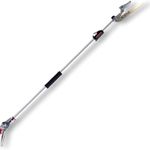
ARS Telescoping Long Reach Pruner
Fine Gardening receives a commission for items purchased through links on this site, including Amazon Associates and other affiliate advertising programs.

Scotts Cordless Grass-Shear/Shrub-Trimmer Combo
Fine Gardening receives a commission for items purchased through links on this site, including Amazon Associates and other affiliate advertising programs.
- 13.5 x 3 x 5 inches
- Uses a 7.2-Volt 2Ah high-capacity built-in lithium-ion battery; Includes a fast charger







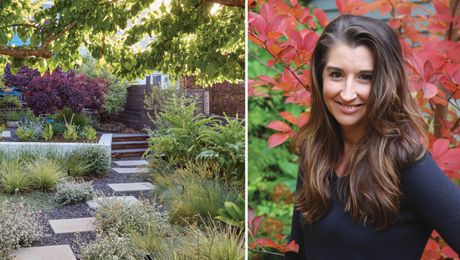
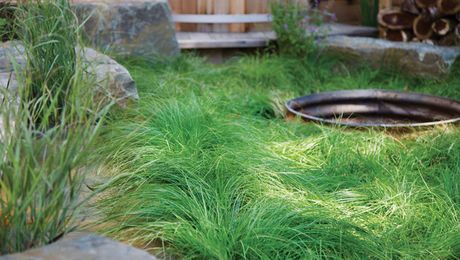










Comments
Log in or create an account to post a comment.
Sign up Log in